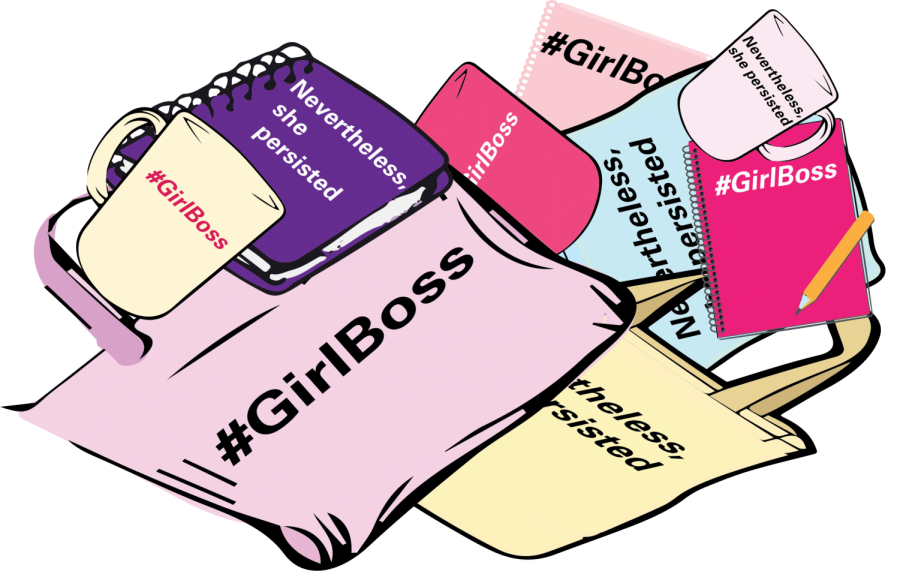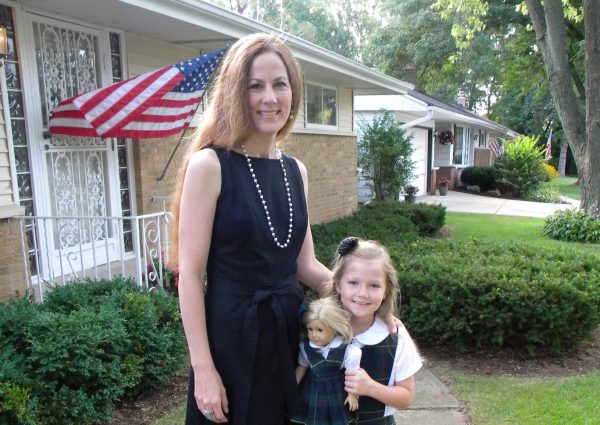OPINION: Nevertheless, she purchased
Women’s History Month is a breeding ground for corporations to cash in on an important cause.
Annalisa Baranowski | The DePaulia for The DePaulia
As February fades, taking its pink hearts and red ribbons, March rears its head, and with it, the color pink takes on a whole new meaning.
If it hasn’t been clear to you yet, it will be astoundingly clear when you visit a Target or listen to the radio. This month and this month only, women are able to crawl out of the professional holes men have dug for them, food chains will acknowledge women like no woman ever asked for and stores like Target will throw up pink for the masses. Yes, you guessed it, it’s Women’s History Month.
Women’s History Month started out as Women’s History Week in 1981 when congress passed a law requesting President Ronald Reagan to proclaim it during the week of Oct. 7. It wasn’t until March 1987 that the whole month was put aside in celebration of the history of women, according to Women’s History Month’s official page.
Consistently throughout the years, businesses have used this as a marketing strategy.
Two years ago in 2018, for example, McDonald’s flipped their sign upside down to form a “W” in “celebration of women everywhere,” according to Business Insider.
McDonald’s also turned their logo upside down on both Twitter and Instagram. While this may have been the greatest feat in sign history, it doesn’t do much to address the actual issues women face in society and the reasons we have Women’s History Month in the first place. No matter how many times you flip a sign, it will never lead to the advancement of women or the end of gender discrimination.
According to Business Insider, McDonald’s did this: “In honor of the extraordinary accomplishments of women everywhere and especially in our restaurants.” I believe that there are better ways to do this. Like, for example, fixing gender discrimination in your own company.
McDonald’s has faced scrutiny very recently for sexual harassment claims. According to Vox, more than two dozen women filed sexual harassment complaints against the company in May 2019.
At the time, 30 percent of McDonald’s officer positions were held by women while 41 percent of director level positions were held by women globally, according to the McDonald’s Newsroom.
Like McDonald’s, other companies fall very short of any long-lasting campaigns supporting women. Most companies seem to fail at creating any actual change.
“If you’re going to be involved in something like this, be involved in it. It is not a one-time short promotion,” says Dan Azzaro, a marketing professor at DePaul.
This is the difference between cause marketing and a transactional marketing style, says Azzaro. Cause marketing takes its support for causes a step further than just giving 1 cent of your purchase to a cause.
“If companies are gonna [get involved], they gotta be involved not just on the financial side but they have to show their support for these [movements],” says Azzaro.
Women’s History Month isn’t the only movement businesses feed on. Practically each month has a celebration that businesses take full advantage of. In April, businesses start caring for the environment. In June, storefronts are stuffed to the brim with rainbow clothes and ever-inclusive ads, only to be completely abandoned come fall. Breast Cancer Awareness month in October has led to pinkwashing, or the commodification of breast cancer.
It is important to question the circumstances of when the business’ involvement in the movement began. Although racism, gender discrimination, homophobia and breast cancer have been around since the beginning of time, most businesses didn’t show their support until very recently.
“It makes it look like you’re jumping on a bandwagon. Like, you were never there for women’s rights before, you were never there for pride rights before. Recognize that, 25 years ago, there weren’t many national advertisements, except maybe for alcohol, in the pride parade,” says Azzaro. “Now, everyone’s involved and now you see companies like Honeymaid Graham Crackers involved.”
This convenient caring about different rights isn’t lost on consumers.
“I feel like the [the advertisements] are superficial. Sometimes it’s good-natured but the way it’s presented sometimes makes it seem not genuine,” says Alyssa Gregorash, a freshman at DePaul.
“It’s a double-edged sword,” says Gaby Ramos, another freshman at DePaul. “In the 1950s, you would never see this type of response from companies. But it is nice that they are acknowledging women, they’re acknowledging the LGBTQ community and that’s good but they’re using it to profit off these groups.”
While some companies fail to convince consumers, some companies seem to be genuinely giving back to their cause. Marketing campaigns like Stacy’s Rise campaign which give a portion of their profits to female-owned businesses, Toms campaign that gives a pair of shoes for each pair sold and Haagen Dazs’ honey bee campaign shows that long-lasting support for a movement is possible year-round.
In a time where women and minorities are finally able to speak out against hate, it isn’t enough for businesses just to go along with it. Businesses need to implement long-lasting changes and it’s our job as consumers to make sure this happens.







